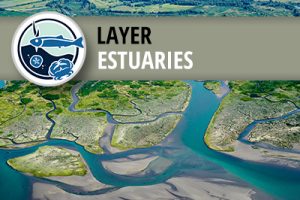West Coast USA Current and Historical Estuary Extent
 Description
Description
Accruate mapping of tidal wetlands is vital for effective conservation and restoration of these valued habitats, and good mapping is key to strategic planning for coastal resilience. Tidal wetlands are defined by regular inundation by the tides; therefore, mapping of tidal wetlands should be based on knowledge of tidal water levels and the land areas inundated by the tides. We developed this tidal wetland mapping following that principle.
Briefly, we used a method developed in Oregon that combines NOAA’s extreme water level models with high-resolution LIDAR digital elevation models (DEMs) to map areas subject to tidal inundation. We refined the mapping using additional data sources such as the National Wetland Inventory, local knowledge, and aerial photo interpretation. Detailed information on the Oregon methods are available online.
Note: This estuary extent data layer represents the approximate extent of current and historical tidal wetlands for PMEP’s 444 estuaries, excluding “unassociated extents” and “mouth connection areas”. Although this mapping does not distinguish current from historical (disconnected) tidal wetlands, a separate follow-on analysis, an “Indirect Assessment of West Coast USA Tidal Wetland Loss“, resulted in a data layer estimating emergent, scrub-shrub and forested tidal wetland losses for 55 non-lagoonal estuaries spanning the contiguous United States West Coast.
Access the estuary extent data layer
